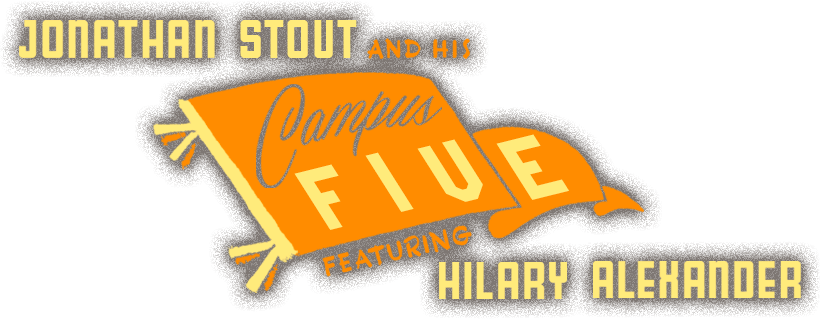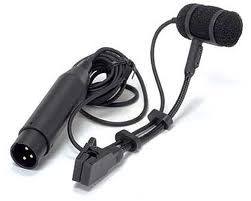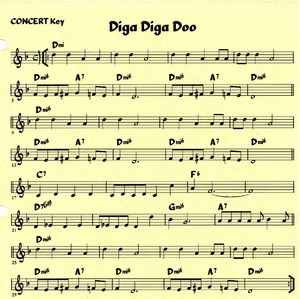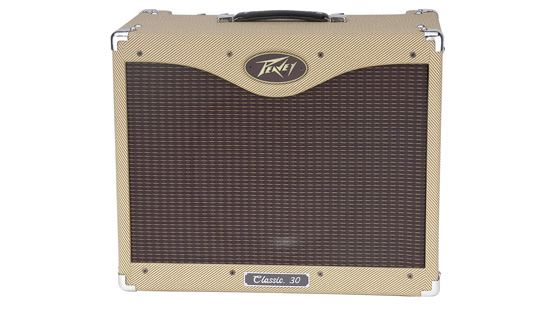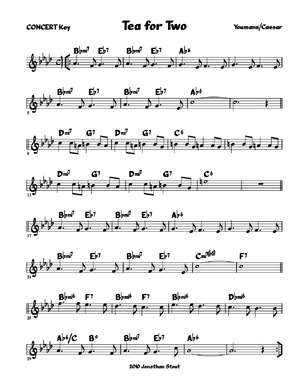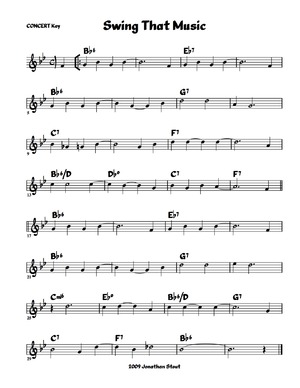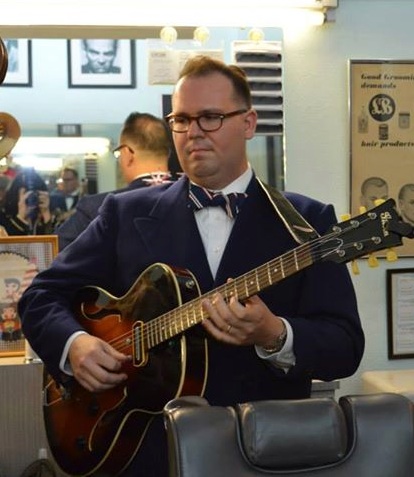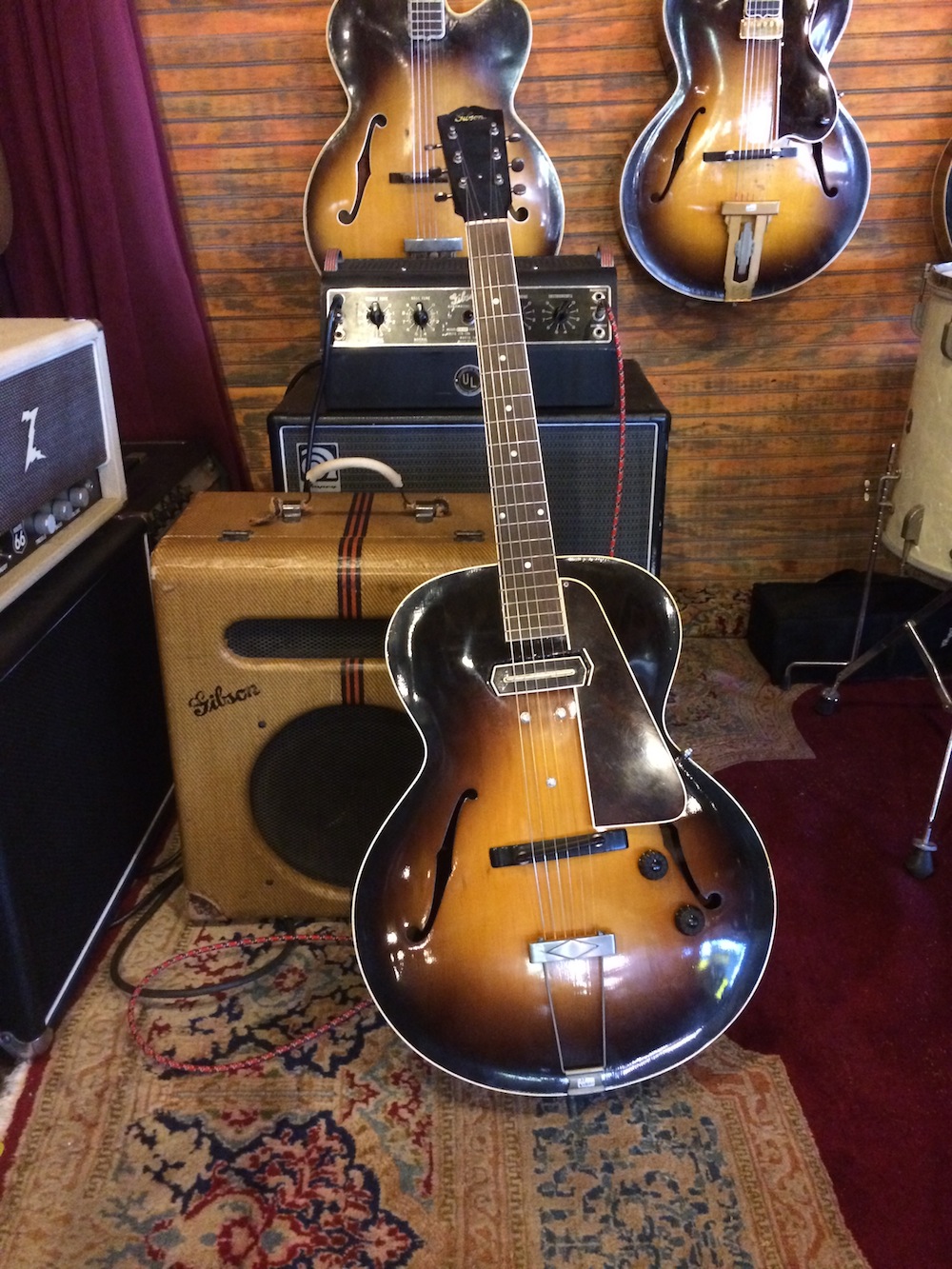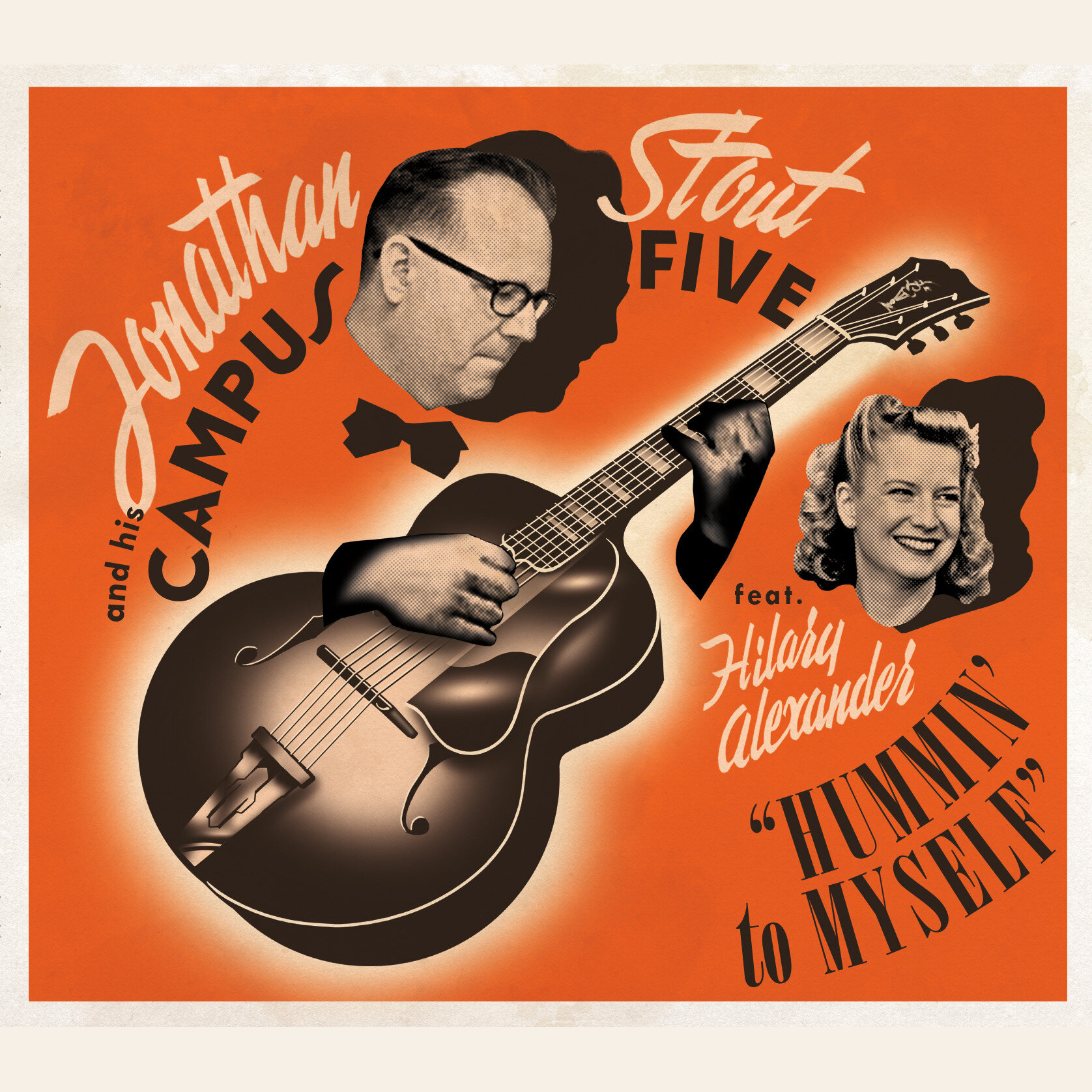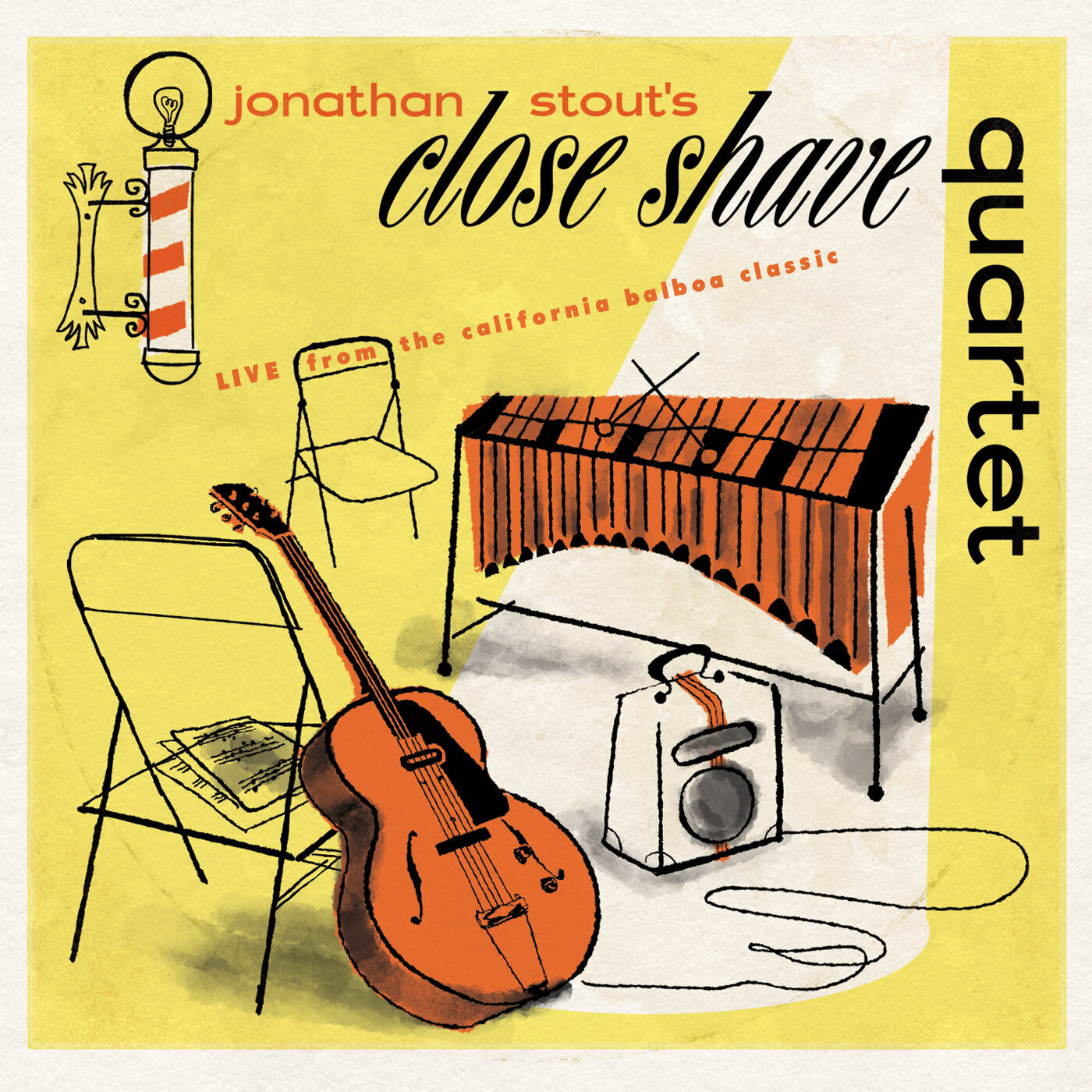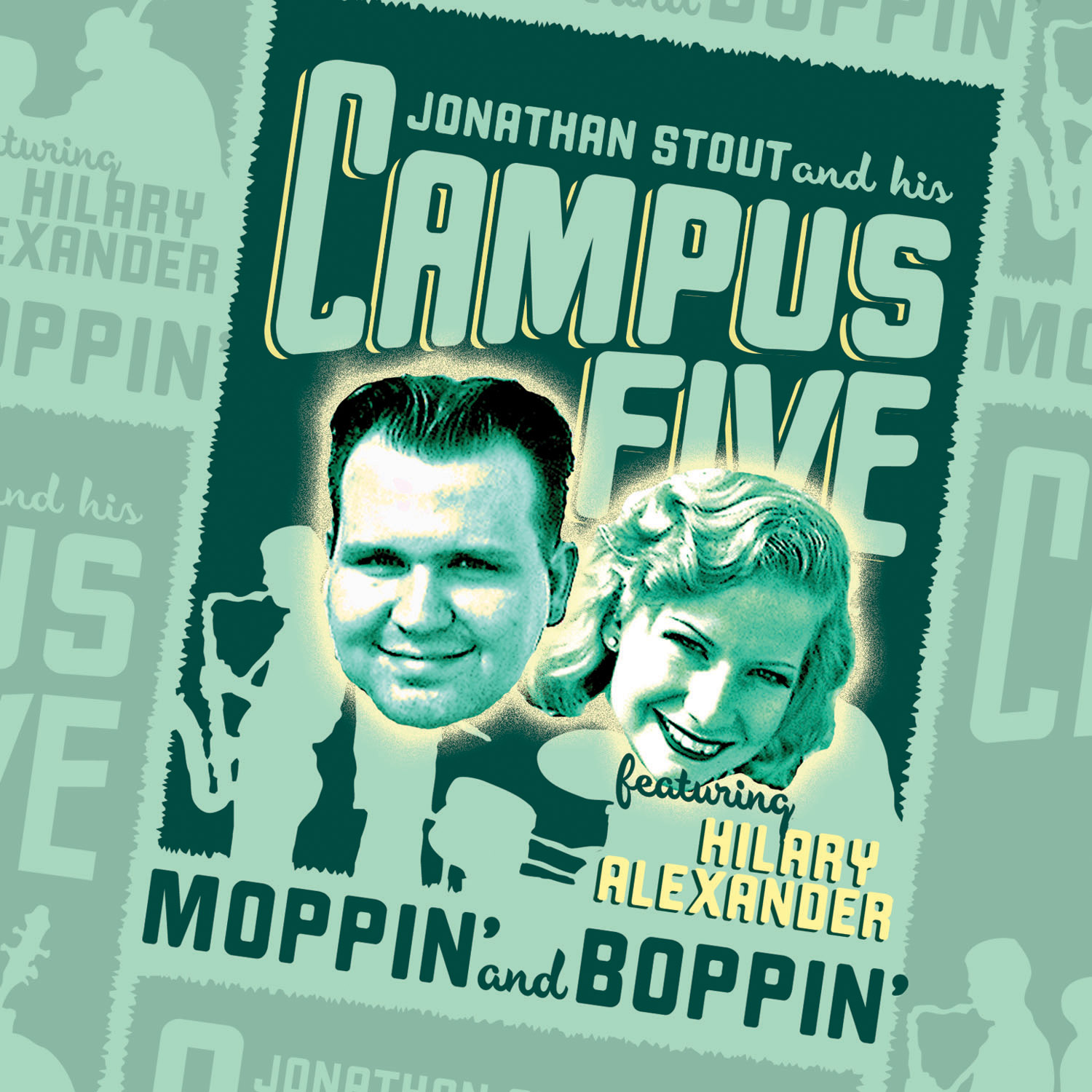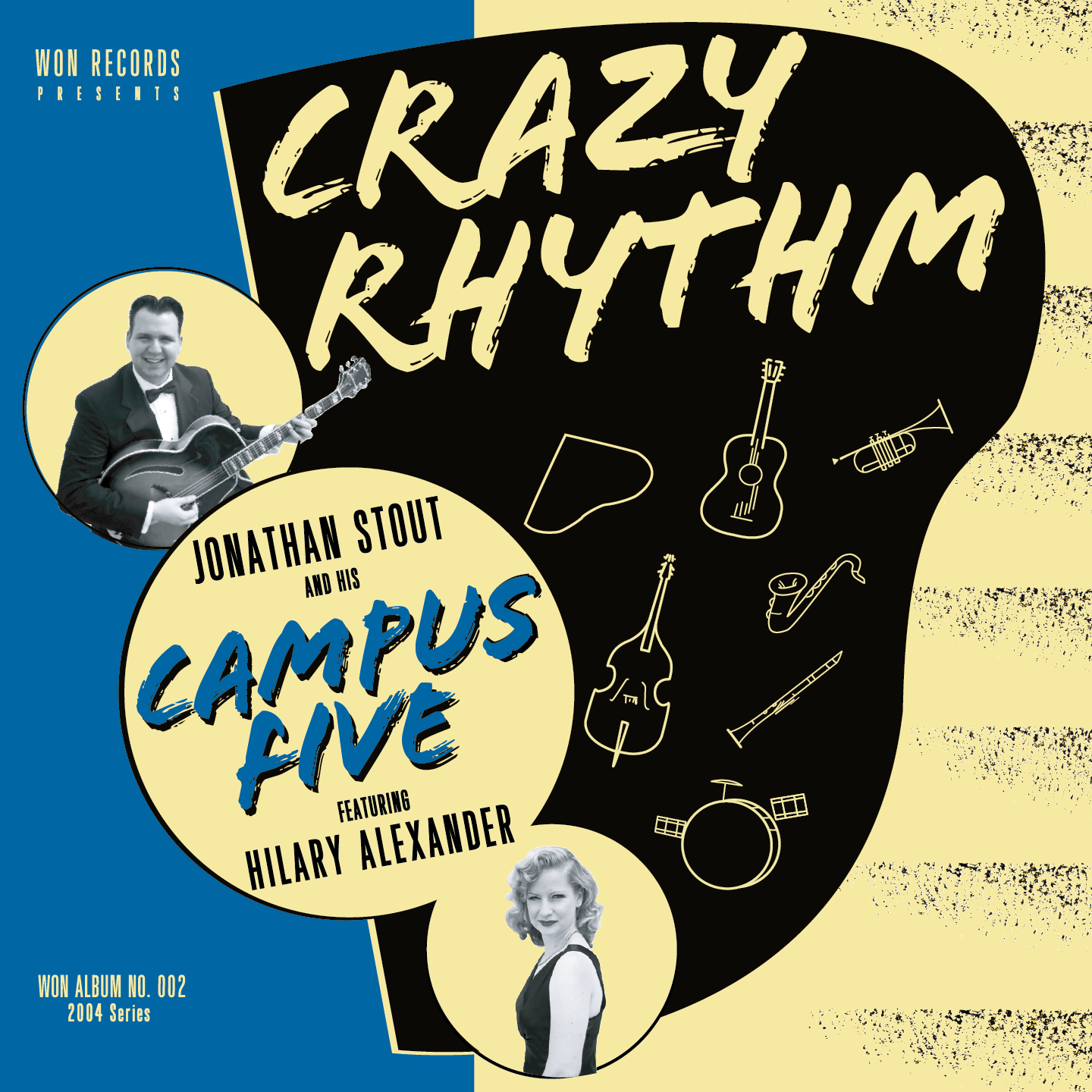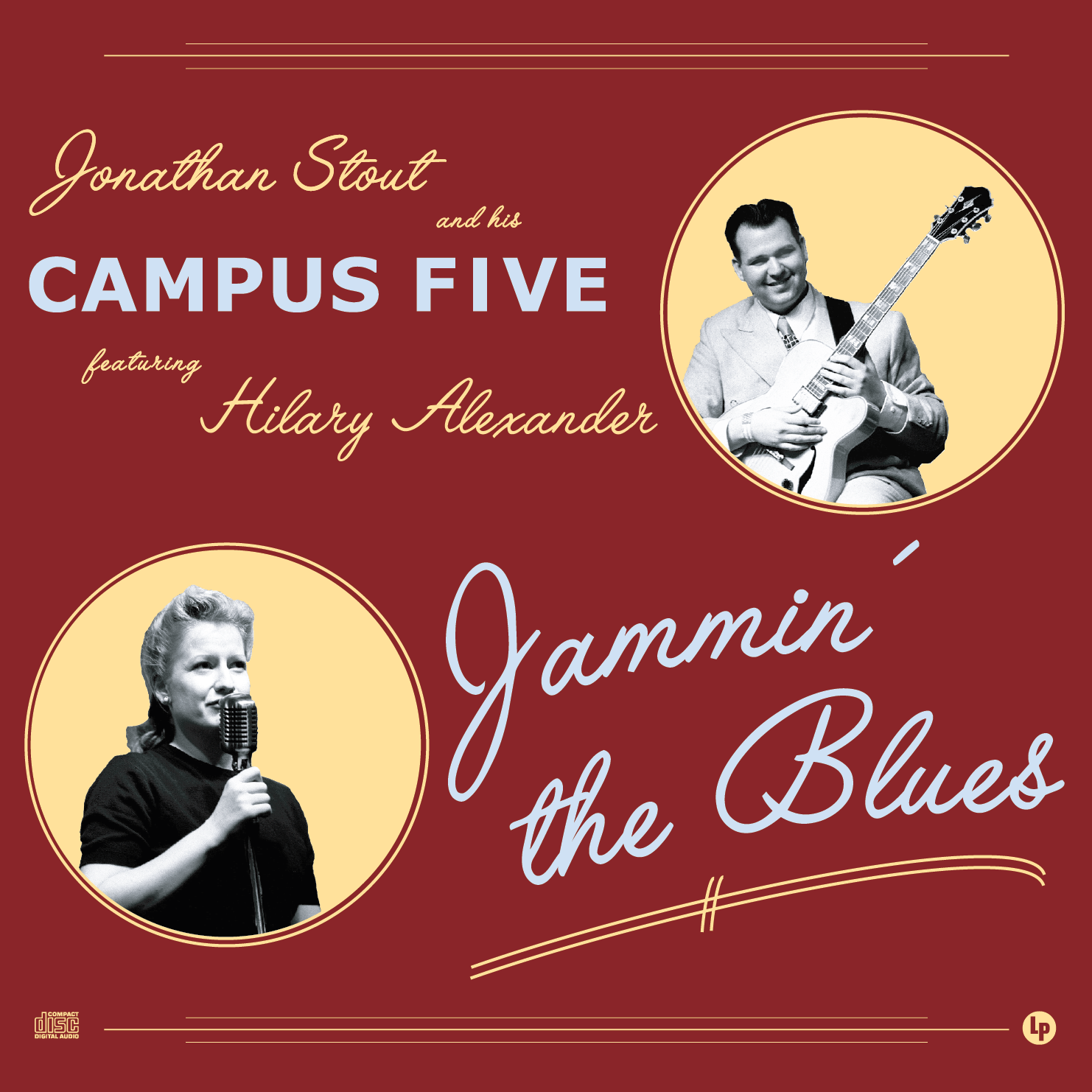Clip-On Mic: Trying Something New in Acoustic Amplification
/ 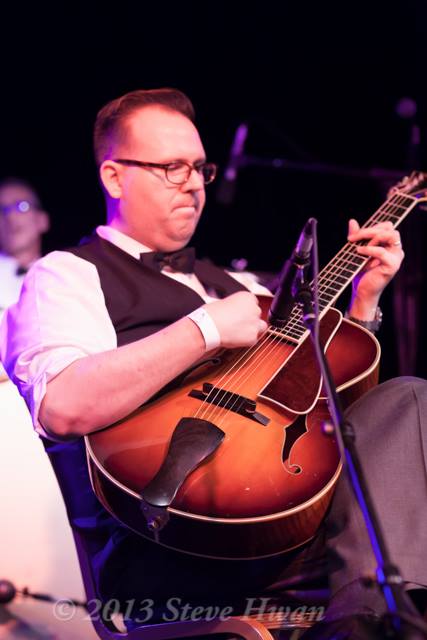
photo by Steve Hwan (and ok, technically that is a Sure SM57 pictured, but you get the idea)
I've been happily using my Rode NT3 for years to mic my acoustic archtop guitars. Being the bandleader, I can demand such a specific solution. Recently I was noticing that even when using the low-profile mic stand I bought specifically for it, it was ruing almost every picture of me playing on that I happened to see on Facebook. Sort of a vain observation, but I never noticed how visually distracting it was.
If it were just that, I'd live with it, because the sound quality is wonderful. But, on most of traveling gigs for the last couple months, and even some at home, I've found it to be difficult to get any stage volume out of it without it feeding back. It doesn't matter how good the guitar sounded if I can't hear even the slightest bit of it. Plus, even when I was getting some monitor, my acoustic guitar solos always seemed to get buried, even when I leaned in the mic.
Now, I should say the best sounding amplified acoustic archtop I've heard was when I saw the Sweet Hollywiians at Boulevard Music in Culver City, CA. Takashi Nakayama (who you've seen before on the blog) was using a DPA 4099 clip on mic, clipped onto the tailpiece pointed down at the top of the guitar. He told me he had it plugged into a mic pre before an AER amp, which provided a DI out to the house. Unfortunately, I've never had the $500+ to drop on the DPA.
With that inspiration, I ended up trying something different at a recent gig. The sound guy mentioned he had a "clip on" mic for one of the horn players who was particularly delinquent about playing "on mic." I'm against clip on mic's for horn players, because usually my guys need to be able to "work the mic" a bit to help with balance and shading. Despite using amplification, we do try to keep the acoustic character as much as possible - though with certain rooms and certain sound guys, it's impossible. All that aside, I figured I might try the clip on mic for my guitar instead.
The sound guy had an Audio-Technica PRO-35
, which comes with it's own windscreen, gooseneck and clamp. It doesn't have a power pack inline, so you have to give it phantom power. We played three nights, with three of my different bands. The first night with my Grand Slam Sextet, I didn't use the mic, because I ended up playing my ES-150 electrically all night (which given that the band is clarinet-vibraphone-electric guitar as the leads, i was ok with, despite my hate for electric rhythm guitar). The next night was with the Campus Five, and I alternated between my Eastman 805 for rhythm and the ES-150 for leads and riffs. It was astounding how much acoustic volume I was able to get, and how clear and articulate the Eastman sounded. Because I wasn't slamming the guitar harder to get volume, I was able to play more relaxed and clean, and the tone dramatically improves when you're not throttling the guitar. It was some of the best playing I'd done on acoustic, and it was very satisfying to be heard for once.
The only problem came when I would swap guitars. Because I had no way to turn of the PRO-35, I risked pointing the mic right at the monitors when I put it down to grab my electric. I figured out what direction to orient the stand and which way to turn the guitar as to not point it right into feedback, Even then, I didn't succeed at that 100%.
The following night, with our 10-piece "pre-swing" band, the Rhythm Busters, I decided to only play my John LeVoi Petite Bouche selmer-style guitar. I've been trying to find ways to differentiate that band from my others, and changing guitars seemed like a good way to do that. At soundcheck, I was stoked because with the Pro 35 I could get enough stage and mains volume without feedback or bleed to "ride" over top of the band, like a clarinet player might do over a shout chorus, or more importantly like Django did in some recordings where he's the featured soloist backed by a big band (a version of "Moten Swing" comes to mind). Also, since Hilary was not this gig, I decided to substitute the melodies on guitar instead of skipping those songs. By then end of the night, I realized that playing Django-y lead guitar was giving the band a more signature sound, and I that can't think of anybody else doing a Django-led 30's Orchestra. Win-win.
I should mention that for both guitars, I clipped the gooseneck onto the tailpiece, with the mic pointed down at the soundboard.
When I got home from the weekend, I set at getting my own clip on mic. The PRO-35 is only around $150, but I noticed that it was decidedly on the lower end of Audio Technica's line. Checking out www.djangobooks.com, I noticed they only carried two higher-end AT's, the AT831B
and the Pro 70. The AT831B
has been used by some leading Gypsy players, through usually with a clip hanging on the soundhole. Neither mic came with a gooseneck, though both come with a power pack, so that you aren't dependent on the board for phantom power - of course, both can accept phantom as well.
I ended up picking up an AT831B on craigslist, and then the AT8418 Gooseneck
(which looks identical to the one the comes on the Audio-Technica PRO-35
) on amazon, for a total just about $20 more than a PRO-35
. I was hoping that AT831B
would have even better sound quality, but I was worried that something about the improved quality or response would make less useable (like more susceptible to feedback, etc). Trying it out at home, I was able to get significant volume out plugged directly into a JBL Eon powered PA speaker, and it didn't seem overly susceptible to feedback.
But there was still the problem of how to prevent the guitar from feeding back when moving it around, say when I change from acoustic to electric for a solo. Checking online there were two main solutions: the Pro Co Sign Off and the Rolls MS111
. Both offered "latching" switching, so that I could turn the mic off via footswitch. The Rolls was cheaper, and it could be changed to "momentary" switch, meaning that I would only mute as long you held down the pedal. I can't say I know when that would be useful for me, but whatever. The ProCo was ~$75 and the Rolls ~$50. I went with cheaper Rolls, hoping I wouldn't end up with something junky for my cheapness. The Rolls arrived and it was more than rugged enough. Oh and since I would have to plug the Mic's power pack into the switch via XLR, before running into from the switch to the board, I bought a 1.5" XLR cable from monoprice as to keep things tidy, and not have a ton of excess cabling around.
I finally used the new mic set up last Wednesday - WOW! What a great improvement over how I had been doing things. I was able to get a ton of volume out of the monitors and never had any problems with feedback. I played some of the best Reuss-style block-chord solos I've played live in a while, specifically because I could hear myself clearly, and could play without mashing my pick into the strings. What a difference! Further, the Rolls switch worked like a charm. It was very easy to mute the mic before switching to my electric.
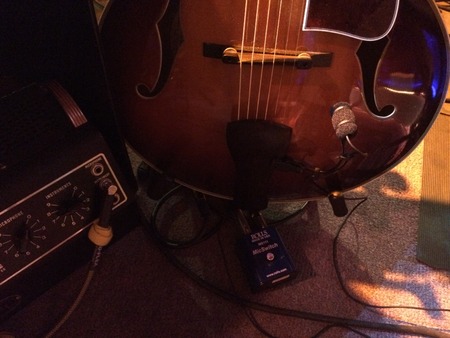 My Eastman with an AT831b/AT8418 combo into the MS111 mute switchI have to say after the four gigs - 2 using the PRO-35
My Eastman with an AT831b/AT8418 combo into the MS111 mute switchI have to say after the four gigs - 2 using the PRO-35, and 2 using the AT831B
- I'm pretty sure combo of the AT831B
, AT8418 Gooseneck
, and Rolls MS111
is going to replace the NT-3 for most gigs.
A final step I may eventually take would be to add an XLR A/B Switch after the Rolls. That way I could alternate between two mixer channels, a softer one for rhythm, and a louder one for leads. Even when we have the luxury of a sound guy who could turn up a guitar solo on the fly, it often takes them a couple seconds to recognize that there is a guitar solo going on, and sometimes when the solo is only 8 bars, they miss it entirely. However, because it would be plugged into two channels of the mixer, I would have to make sure phantom power was disabled, because it could damage the mic to receive both channels worth of phantom power.
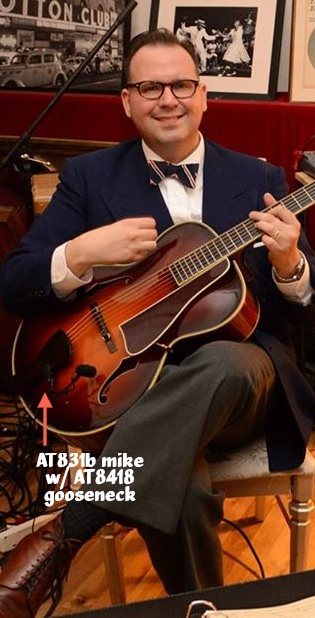 Photo by Jennifer Stockert
Photo by Jennifer Stockert
Also, the last gig we played with monitors, and boy, did I miss having my own monitor. I think I may have to step up and buy a smaller powered speaker, such as the Mackie SRM150 , or the larger Mackie SRM350v2 - because clearly, I need to bring more stuff to a gig....
Well, one step at a time.
